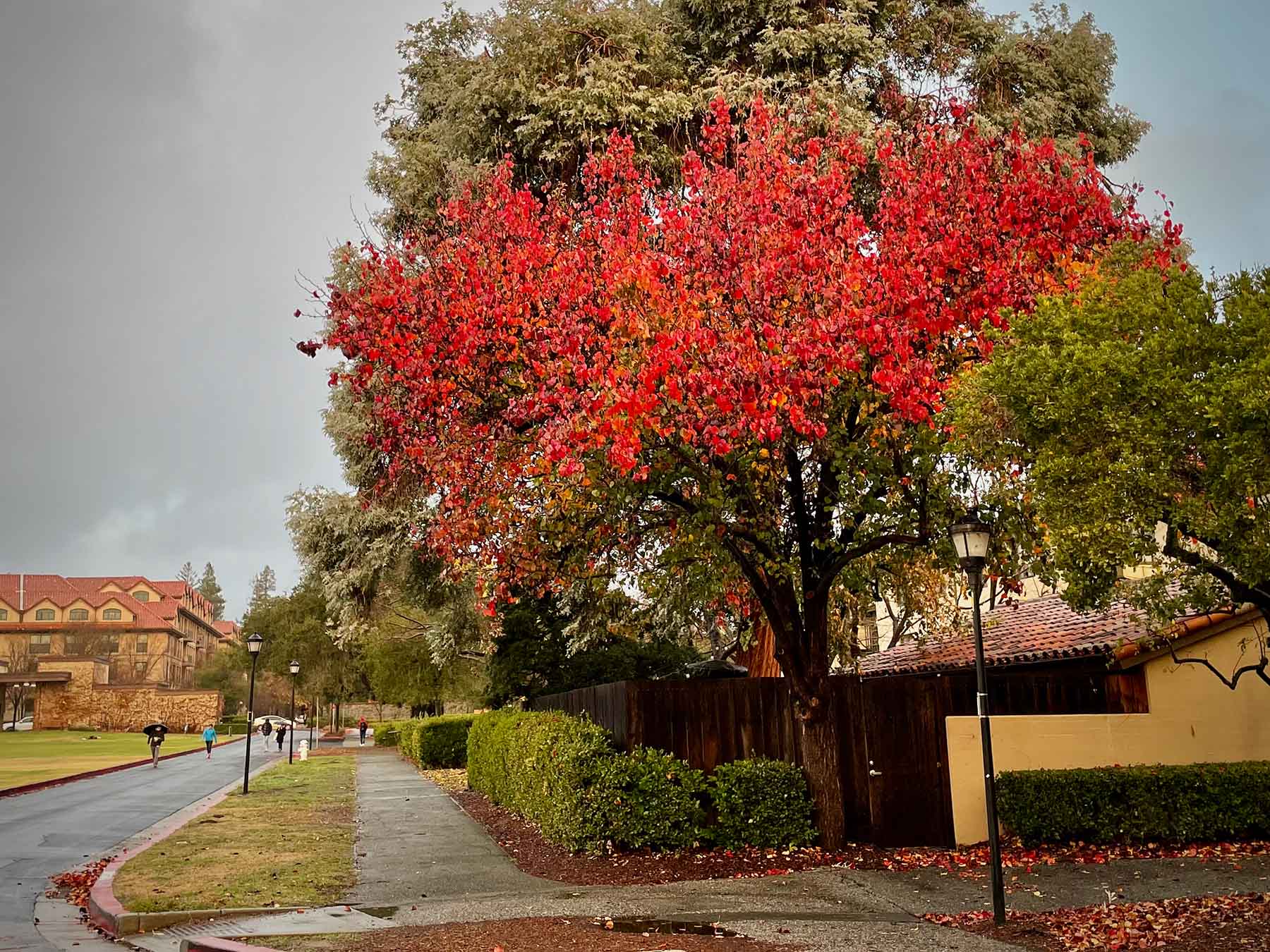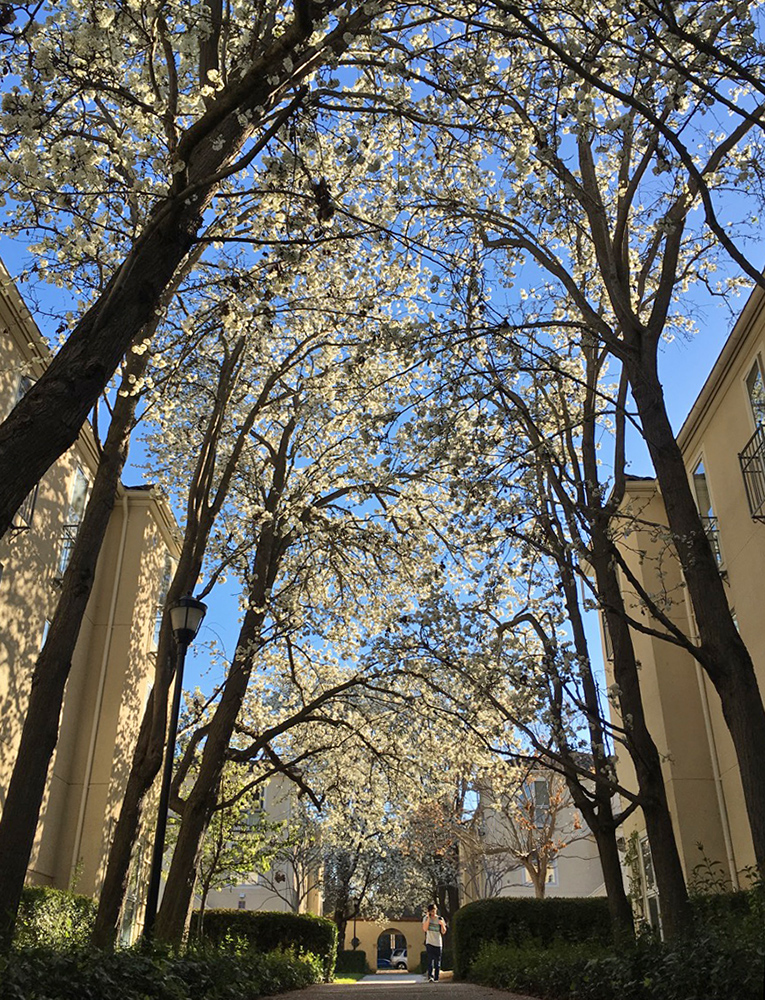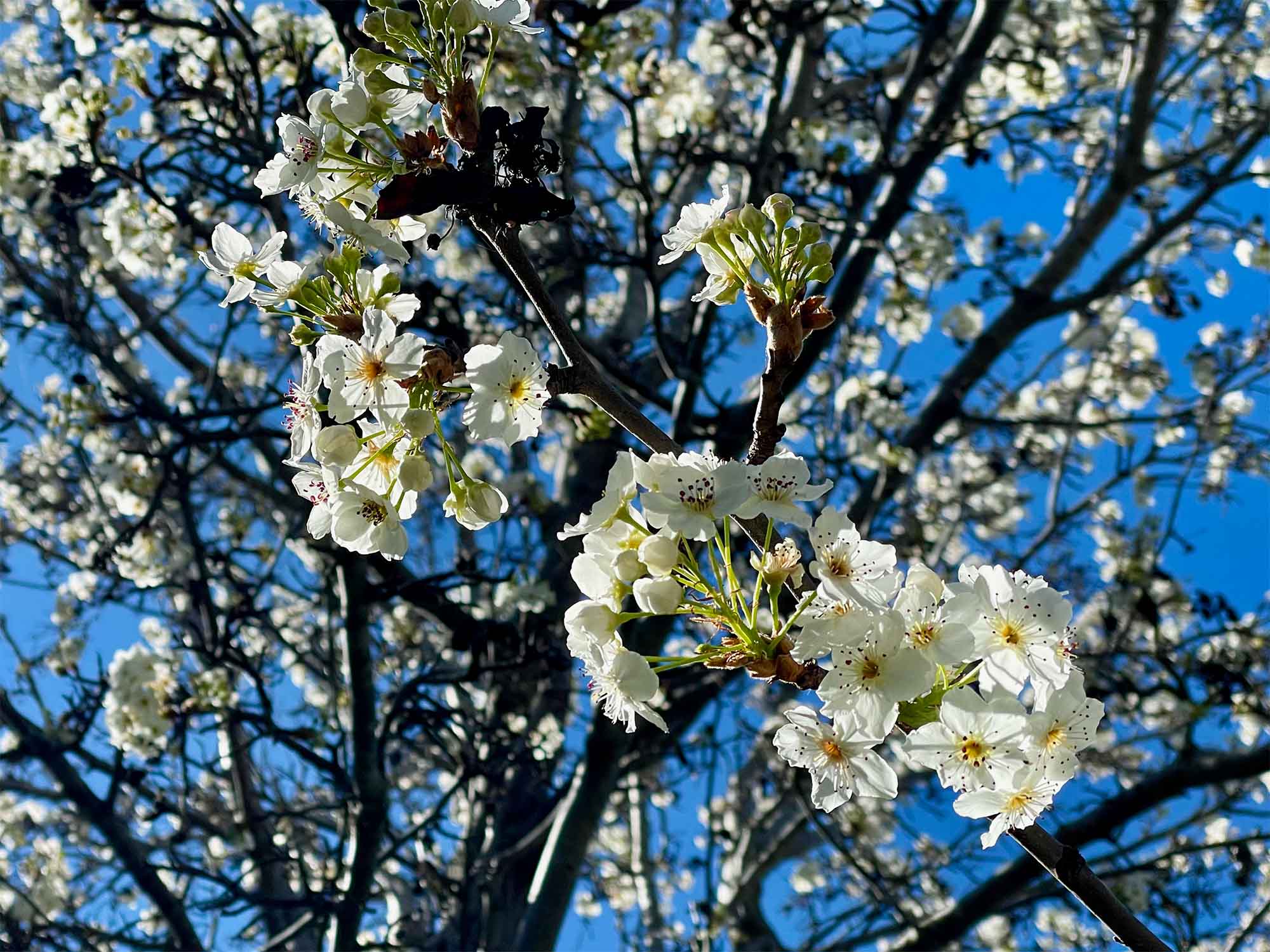Pyrus calleryana
 Callery pear
Callery pear
A handsome deciduous tree with glossy orbicular leaves that turn a splendid crimson to orange in late fall, often peaking at Christmas. White flowers appear in late winter. The original cultivar ‘Bradford’ has a spreading crown; see it at the service driveway south of Wilbur Hall. Its lack of a central leader causes consternation among arborists: the branches emerge from more or less a central point, making for weak attachments. What’s more, in winter ghastly wilted clumps of leaves, blackened by fireblight, hang from the branches like bats. If that weren’t enough, some people detest the yeasty fragrance of its blossoms. What appear to be hit pieces against it appear with some regularity in the national press, adding weediness to its list of sins. Sadly, the critiques have some validity but context matters. It has sprouted up a couple of times in moister spots in the Arboretum, but not in a concerning way.
Newer varieties improve on things in various ways. More than a dozen of trade name Aristocrat can be seen on the Escondido Road side of Studio 1, and continue along the east side of the building. Two rows of the very formal upright cultivar with trade name Chanticleer are on the east side of the Cemex building in Schwab Residential Center. At Rains Houses, sheltered walkways leading from Bowdoin Street at both ends of Hilgard Court are lined with groups of 16 or so specimens of unknown variety. In Palo Alto, Callery pear is the street tree of Ramona Street between University Avenue and Hamilton Avenue. The improved ‘New Bradford’ cultivar has been replacing older trees, for example on both street faces of 261 Hamilton Avenue.
Name derivation: Pyrus – the Latin name; calleryana – after J. Callery, a French missionary who collected the type specimen.
About this Entry: The main text of this entry started out from the book Trees of Stanford and Environs, by Ronald Bracewell, published 2005. Entry entirely rewritten, removing mention of the plantation of 60 Chanticleer behind Schwab Residential Center and the group north of Braun; added various cultivar locations (Feb 2024, SP).






